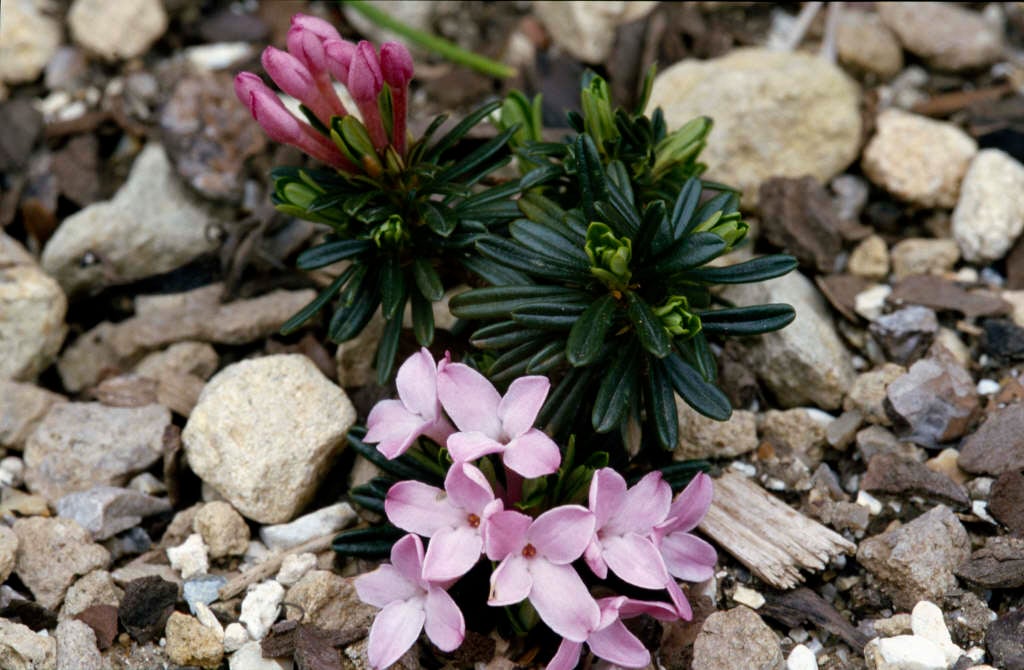Daphne arbuscula
shrubby daphne
A rounded, dwarf evergreen shrub to 15cm tall, with narrowly oblong, dark glossy green leaves to 18mm long. Flowers deep pink, very fragrant, in dense clusters at the ends of the shoots in late spring and early summer

Buy this plant
Size
Ultimate height
0.1–0.5 metresTime to ultimate height
2–5 yearsUltimate spread
0.1–0.5 metresGrowing conditions
Moisture
Moist but well–drainedpH
Acid, Alkaline, NeutralColour & scent
| Stem | Flower | Foliage | Fruit | |
| Spring | Pink | Green | ||
|---|---|---|---|---|
| Summer | Pink | Green | ||
| Autumn | Green | Brown | ||
| Winter | Green |
Position
- Full sun
Aspect
South–facing or West–facing
Exposure
Sheltered Hardiness
H5Botanical details
- Family
- Thymelaeaceae
- Native to GB / Ireland
- No
- Foliage
- Evergreen
- Habit
- Matforming
- Potentially harmful
- TOXIC if eaten, skin irritant. Wear gloves and other protective equipment when handling TOXIC to pets - see the HTA guide to potentially harmful plants for further information and useful contact numbers
- Genus
Daphne can be deciduous or evergreen shrubs with small, usually very fragrant tubular, 4-lobed flowers, often followed by colourful berries
- Name status
Correct
- Plant range
- Czech Rep. Hungary Slovakia
How to grow
Cultivation
Grow in moderately fertile, humus-rich well-drained but not dry soil. Mulch to keep roots cool. Prefers slightly acid to slightly alkaline soil in full sun. Resents transplanting
Propagation
Propagate by seed in containers in a cold frame as soon as ripe. Insert softwood cuttings in early to mid-summer, and semi-ripe and evergreen cuttings in mid or late summer. Graft in winter or layer in spring
Suggested planting locations and garden types
- Gravel garden
- Rock garden
- City and courtyard gardens
- Cottage and informal garden
- Flower borders and beds
Pruning
Pruning group 1 or pruning group 8, keep pruning to a minimum
Pests
May be susceptible to aphids
Diseases
May be susceptible to honey fungus (rarely), phytophthora root rot, fungal leaf spot and virus diseases
Get involved
The Royal Horticultural Society is the UK’s leading gardening charity. We aim to enrich everyone’s life through plants, and make the UK a greener and more beautiful place.